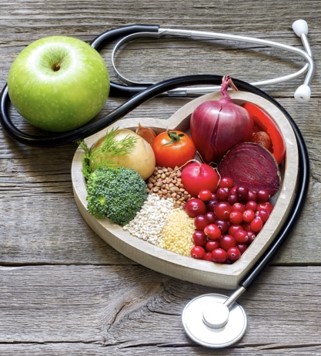Be a healthy diet

Overview
Consuming a healthy diet throughout the life-course helps to prevent malnutrition in all its forms as well as a range of noncommunicable diseases and conditions. However, increased production of processed foods, rapid urbanization and changing lifestyles have led to a shift in dietary patterns. People are now consuming more foods high in energy, fats, free sugars and salt/sodium, and many people do not eat enough fruit, vegetables and other dietary fibre such as whole grains.
The exact make-up of a diversified, balanced and healthy diet will vary depending on individual characteristics (e.g. age, gender, lifestyle and degree of physical activity), cultural context, locally available foods and dietary customs. However, the basic principles of what constitutes a healthy diet remain the same.
Key facts of health diet :
1) A healthy diet helps to protect against malnutrition in all its forms, as well as noncommunicable diseases including such as diabetes, heart disease, stroke and cancer.

2) Unhealthy diet and lack of physical activity are leading risks to health.
3) Healthy dietary practices start early in life.
4) Energy intake (calories) should be in balance with energy expenditure. To avoid unhealthy weight gain, total fat should not exceed 30% of total energy intake.
5) Limiting intake of free sugars to less than 10% of total energy intake is part of a healthy diet.
6) Keeping salt intake to less than 5 g per day helps to prevent hypertension, and reduces the risk of heart disease and stroke in the adult population.
7) Whole grains, vegetables, fruits, and beans plays a big role in preventing cancer and contributing to a healthier life.
Practical advice on maintaining a healthy diet
More Fruit and vegetables
Eating at least 400 g, or five portions, of fruit and vegetables per day reduces the risk of cancer and helps to ensure an adequate daily intake of dietary fiber fruit and vegetable intake can be improved by:

1) always including vegetables in meals.
2) eating fresh fruit and raw vegetables as snacks.
3) eating fresh fruit and vegetables that are in season and eating a variety of fruit and vegetables.
Limiting Sugars
Both adults and children, the intake of free sugars should be reduced to less than 10% of total energy intake .Consuming free sugars increases the risk of dental caries . Excess calories from foods and drinks high in free sugars also contribute to unhealthy weight gain, which can lead to overweight and obesity. Sugars intake can be reduced by:
1) Limiting the consumption of foods and drinks containing high amounts of sugars, such as sugary snacks, candies and sugar-sweetened beverages (all types of beverages containing free sugars, these include carbonated or non‐carbonated soft drinks, fruit or vegetable juices and drinks, liquid and powder concentrates, flavoured water, energy and sports drinks, ready‐to‐drink tea, ready‐to‐drink coffee and flavoured milk drinks)

2) Eating fresh fruit and raw vegetables as snacks instead of sugary snacks.
Limiting Salt and Sodium
Most people consume too much sodium through salt and not enough potassium. High sodium intake and insufficient potassium intake contribute to high blood pressure and in turn increases the risk of heart disease and stroke. Reducing salt intake to the recommended level of less than 5 g per day.
People are often unaware of the amount of salt they consume. Most salt comes from processed foods such as bacon, ham, salami, cheese, salty snacks, bread. Salt is also added to foods during cooking such as bouillon, stock cubes, soy sauce, fish sauce. Salt intake can be reduced by:
1) Limiting the amount of salt and high-sodium condiments when cooking and preparing foods.
2) Not having salt or high-sodium sauces on the table.
 3) Limiting the consumption of salty snacks and choosing products with lower sodium content.
3) Limiting the consumption of salty snacks and choosing products with lower sodium content.Limiting Fats
Reducing the amount of total fat intake to less than 30% of total energy intake helps to prevent unhealthy weight gain:
1) Reducing saturated fats to less than 10% of total energy intake.
2) Reducing trans-fats to less than 1% of total energy intake and replacing both saturated fats and trans-fats with unsaturated fats, in particular, with polyunsaturated fats.
Fat intake, especially saturated fat and industrially-produced trans-fat intake, can be reduced by:
1) Steaming or boiling instead of frying when cooking.
2) Replacing butter, lard and ghee with oils rich in polyunsaturated fats, such as soybean, canola, corn, safflower and sunflower oils.
3) Eating reduced-fat dairy foods and lean meats, or trimming visible fat from meat.
4) Limiting baked and fried foods, doughnuts, cookies.

 EN
EN